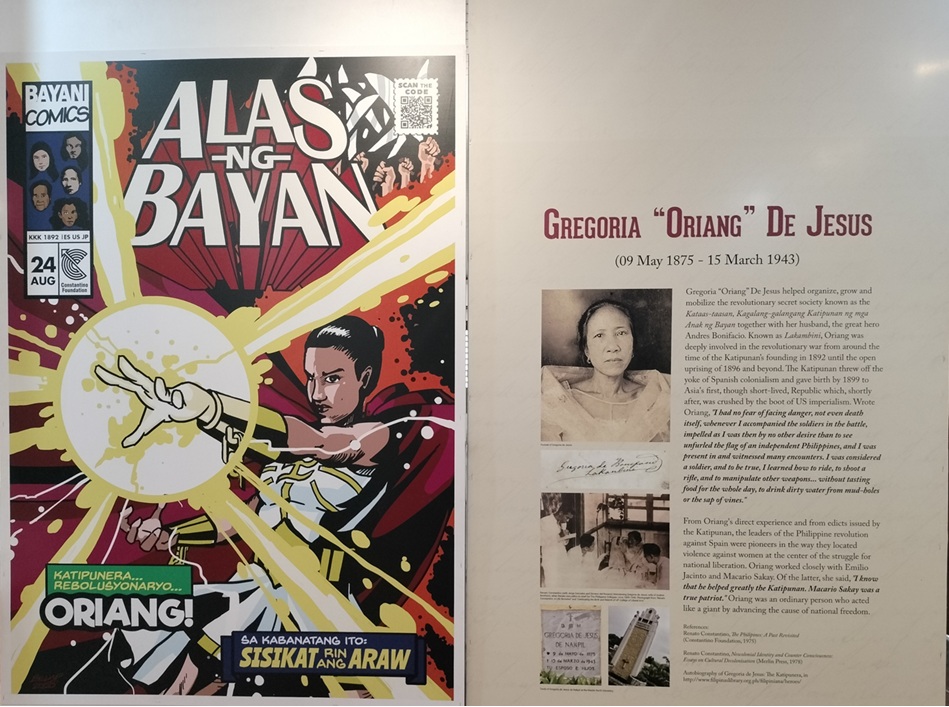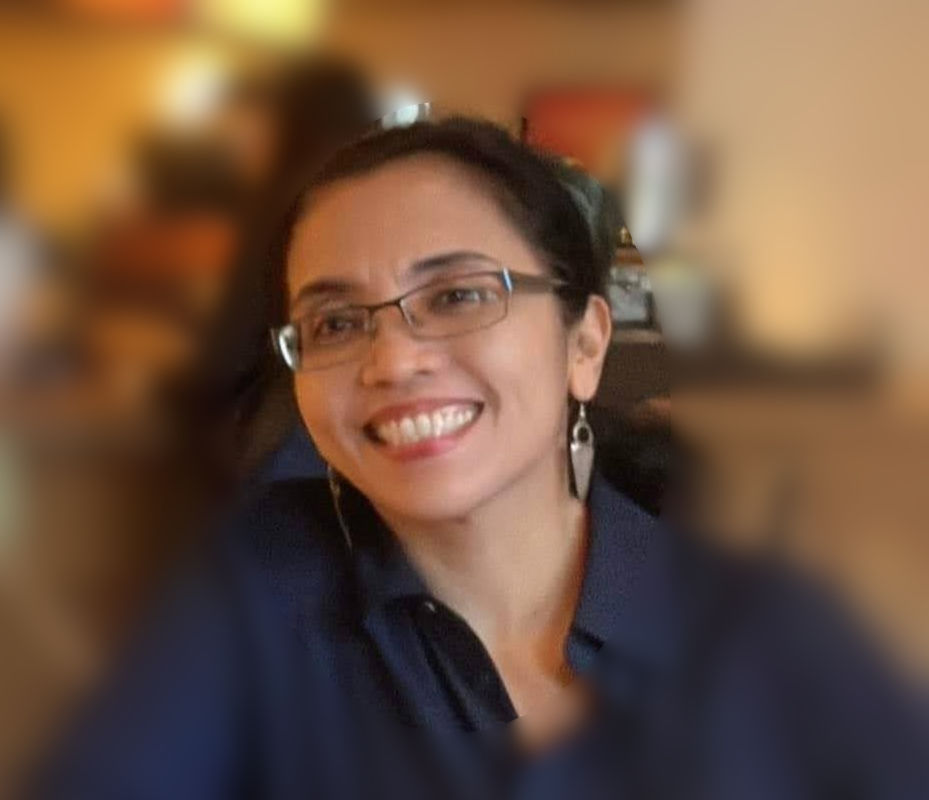Art, feminism, and history are interconnecting at Tandang Sora Women’s Museum. On the first floor is Alas ng Bayan 2.0, serving as an introduction to Filipino women heroes and leaders, while the museum’s permanent exhibit — the Philippines’ herstorical timeline from precolonial times to the present — on the second floor is the deep dive.
The museum, which was inaugurated last Feb. 19, is a fitting venue for Alas ng Bayan 2.0. It honors the patriotic legacy of women along with Tandang Sora (aka Melchora Aquino), underscoring what the visual artist Sandra Torrijos had earlier said: “Women are leaders. Women can be leaders. This museum broadens and deepens the story of the entire Philippines” (report by Raymond Aldo M. Mina in CoverStory.ph).
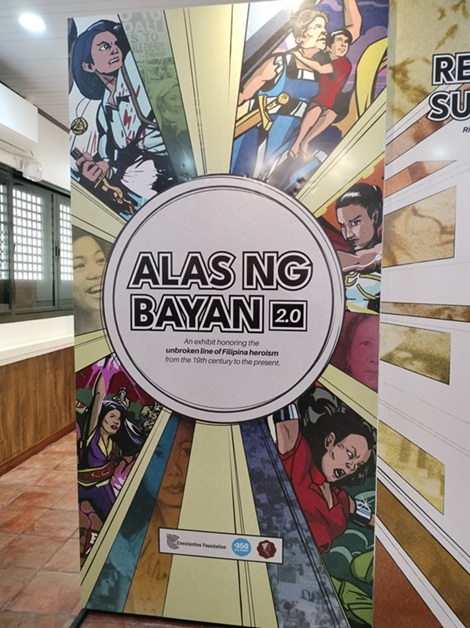
Lorena Barros, Gloria Capitan, Apolonia Catra, Gregoria de Jesús, and Remedios Paraiso-Gomez are the intrepid women featured in Alas ng Bayan 2.0.
The exhibit highlights memory and the responsibilities of those inheriting the memory, which is rendered in a form familiar to the modern audience, curator Rio Constantino says in the exhibit’s leaflet. “[It is] a means of counteracting the twin ills of climate change and national forgetting, [to] help reverse the belittling which women have too often struggled against through history,” he adds.
Alas ng Bayan 2.0 was organized by the Constantino Foundation and 350 Pilipinas, a nonprofit climate justice advocate. The exhibit series is a history-through-art initiative of the foundation that introduces the Philippine past and feminism to young people as fundamental elements in responding to national forgetting and the climate crisis.
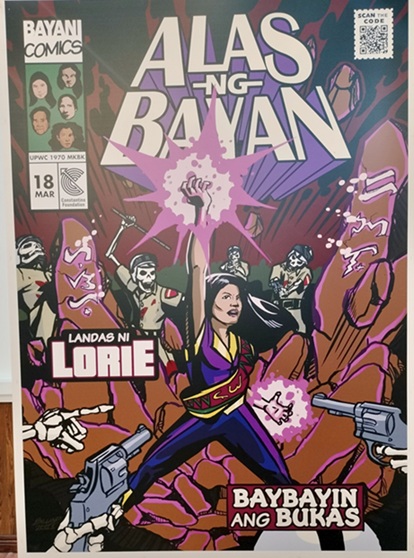
Comics heroes
It was during the pandemic that Constantino and digital art illustrator Basilio “Billy” Pangilinan (@billy.bored) discussed turning Filipino heroines into superheroines for an exhibit. Pangilinan did the art work while Constantino provided feedback and connected their efforts with the first Alas ng Bayan paintings commissioned and first exhibited at the Linangen Gallery of the Constantino Foundation in 2019. While tarot cards depicted the women’s herstory in Alas ng Bayan 1.0, Pangilinan used comics (komiks in Filipino or manga/manhwa in Japanese) for the second iteration, according to Constantino.
Pangilinan is a DC and Marvel comics fan and, like Constantino, read the Filipino graphic novel “The Mythology Class” and “the trifecta of ‘Naruto,’ ‘Bleach,’ and ‘One Piece.’” For his part, Constantino secretly read the manga “Maid Sama!” in high school (“My teenage insecurity wouldn’t let it be known,” he quips) and, more recently “Dead Balagtas” and “Ella Arcangel.”
Comics, “like other forms of storytelling, serve as potent channels for learning and communion,” Constantino says. In “Ella Arcangel,” social and ecological degradation are channeled in a fairy queen that Ella met in the city, he relates. Another, he adds, is the spirit needed to face the current climate crisis: Ella asks the god of the earth to continue living on the guardian’s afflicted back.
Protest rallies in Indonesia, Nepal, and the Philippines showed fiction and reality crisscrossing, Constantino notes. He cites the Gen Z’s symbol of resistance: a grinning cartoon skull wearing a straw hat. It was co-opted from the banner of Monkey D. Luffy’s pirate group Straw Hat Crew of the manga “One Piece.”

Fighting oppressors
Constantino says he and Pangilinan kept the superheroines grounded, rooting their “superpowers” in traits they possessed. The first superheroine that museum-goers see is Gloria Capitan (28 March 1959 – 1 July 2016), who, according to the panel, was an anti-coal activist and human rights defender affiliated with the Coal-Free Bataan Movement, and a former president of the community-based organization Samahan ng Nagkakaisang Mamamayan ng Lucanin. The organization campaigned against the construction of a coal plant and open coal storage facility in Barangay Lucanin in Mariveles, Bataan.
Capitan said: “I’ll only stop when my eyes are closed! What else can I do when I’m already dead? This isn’t for me; it’s for my grandchildren. It hurts me when I see them getting sick.”
The panel describes Capitan as a fearless leader — fierce yet caring — who called out and resisted environmental and social injustices. She participated in and led campaigns up to the time she was killed in her canteen by unidentified gunmen on July 1, 2016, the day Rodrigo Duterte was sworn in as president. Her death was the first recorded extrajudicial killing under the Duterte administration.

Next is Maria Lorena Barros (18 March 1948 – 24 March 1976), founding chair of the Malayang Kilusan ng Bagong Kababaihan or Makibaka. She joined the underground to fight Ferdinand Marcos Sr.’s dictatorship soon after martial law was declared.
The panel, quoting The Bantayog ng mga Bayani, states: “Barros from early childhood showed keen intelligence, a searching mind and precocious social awareness nurtured by her mother Alicia Morelos. The latter, a granddaughter of a [member of secret revolutionary society Katipunan] and member of the Hukbalahap guerrilla resistance, would become her daughter’s closest friend and confidante.”
The panel further details that Barros, a graduate of the University of the Philippines Diliman, didn’t “repress her natural charm and kindheartedness,” bucking the stereotypical image of a feminist activist. She “was seriously wounded in an armed encounter with soldiers in Mauban, Quezon, in March 1976.” Her captors promised her medical treatment if she cooperated with them, but she said she’d rather die for her beliefs, and was shot in the nape.
Toe-to-toe confrontation
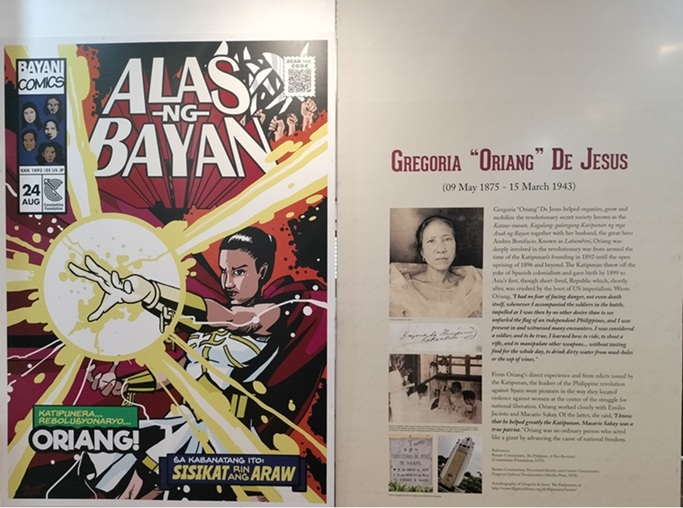
Gregoria de Jesús (9 May 1875 – 15 March 1943), or Oriang, organized, recruited, and mobilized the Katipunan together with her husband Andrés Bonifacio.
The panel quotes words from Oriang’s memoir: “I had no fear of facing danger, not even death itself, whenever I accompanied the soldiers in the battle, impelled as I was then by no other desire than to see unfurled the flag of an independent Philippines, and I was present in and witnessed many encounters. I was considered a soldier, and to be true, I learned how to ride, to shoot a rifle, and to manipulate other weapons… without tasting food for the whole day, to drink dirty water from mud-holes or the sap of vines.”
Likewise, the panel mentions that Oriang worked closely with Emilio Jacinto, “the brains of the Katipunan,” and Gen. Macario Sakay, president of the Tagalog Republic. Of the latter, she was believed to have said, “I know that [Sakay] helped greatly the Katipunan. [He] was a true patriot.”
Apolonia Catra, the only woman in the Alas ng Bayan series without a known portrait or photo, is also featured. The panel acknowledges that the circumstances of her life, including her birthday, are unknown. What is widely known is she was the only woman officer in Sakay’s armed forces under the command of Lt. Col. Lucio de Vega, and was killed in combat on March 5, 1905, during the Philippine-American War. She “was surprised in the mountains and refused to surrender,” and, like Sakay et al., was branded a bandit by US authorities. After her death, Sakay was captured in 1906 and hanged a year later by US troops.
The panel states that a description of Catra by Ohio State University scholar George Yarrington Coats links the ongoing LGBT debates and issues surrounding the extrajudicial killings. Coats says Catra “dressed in men’s clothing and was known for her cruelty and reckless courage.”
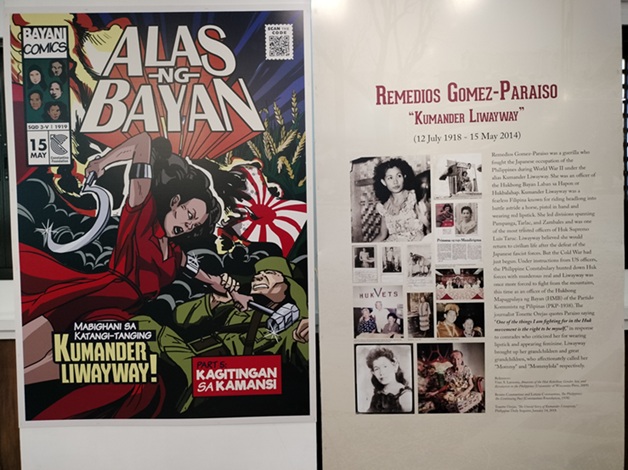
The last panel is on Remedios Gomez-Paraiso aka Kumander Liwayway (12 July 1918-15 May 2014), who fought against the Japanese occupation of the Philippines in World War II. Liwayway was a trusted officer of Hukbalahap Supremo Luis Taruc, and led troops in Pampanga, Tarlac, and Zambales.
Liwayway is described as “fearless, [rode] headlong into battle astride a horse, pistol in hand, and [wore] red lipstick.” Journalist Tonette Orejas reports that Liwayway was criticized by her comrades for wearing lipstick and appearing feminine. To this, Liwayway is quoted as saying: “One of the things I am fighting for in the Huk movement is the right to be myself.”
It is also mentioned that Liwayway believed she would return to civilian life after the defeat of the Japanese, but the Cold War had begun. The Philippine Constabulary hunted down Huk forces following instructions from US officers, and Liwayway once more took up the fight as an officer of the Hukbong Mapagpalaya ng Bayan of the Partido Komunista ng Pilipinas.
Half the sky
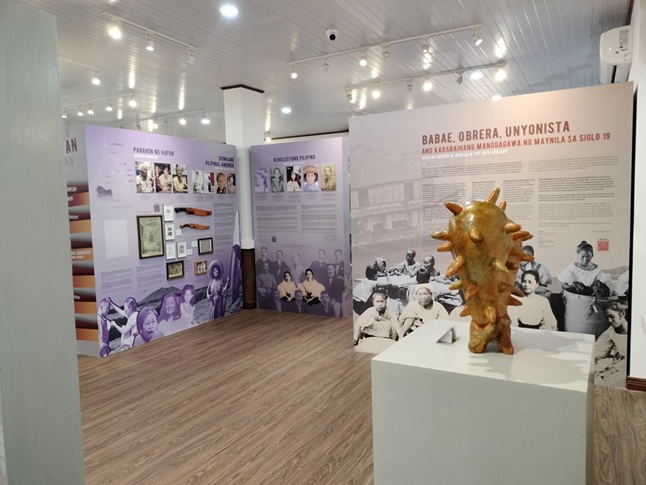
Alas ng Bayan 2.0 is an affirmative lesson on women and feminism. The actions of Catra et al., highlight the gender-neutral form of power through a popular art medium — an apt move in an era of abysmal knowledge of history in the Philippines.
The exhibit amplifies the Chinese proverb “Women hold up half the sky,” denoting women’s significant social and economic contributions to a country’s development. Lamentably, as the rest of the world treads this path, Filipino women “feature so little in our national conscience,” remarks Constantino. Nonetheless, he is optimistic that “maybe soon a new legion of superheroes will [emerge] from our ranks.
Alas ng Bayan runs until Nov. 23. Tandang Sora’s Women Museum (Banlat Road, Quezon City) is open 9 a.m. – 4 p.m.,Tuesdays to Sundays. Admission is free.
